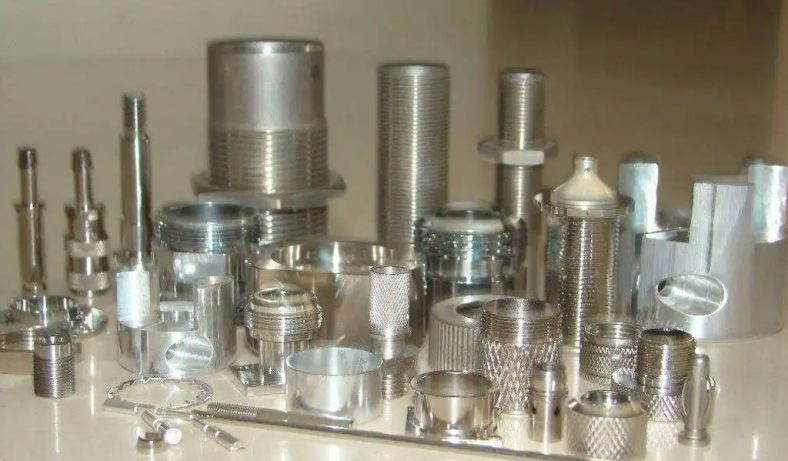In today’s rapidly evolving industrial landscape, the role of Computer Numerical Control (CNC) technology in shaping the manufacturing sector cannot be overstated. CNC digital parts have become indispensable in various industries, from aerospace to automotive and beyond. This article delves into the significance of CNC digital parts in the market and explores strategies to enhance the quality of these essential components.
View More Articles:

The Rise of CNC Digital Parts
CNC machining has undergone a remarkable transformation in recent years. Traditional machining methods often relied on manual labor, resulting in inconsistencies and limitations in precision. CNC technology, on the other hand, leverages computer-controlled systems to produce highly accurate and consistent parts.
The primary role of CNC digital parts in the market can be summarized as follows:
- Precision Engineering: CNC machines excel in precision engineering. They can achieve tolerances of microns, ensuring that every part produced meets stringent quality standards. This level of accuracy is crucial in industries where safety and reliability are paramount, such as aerospace and medical device manufacturing.
- Versatility: CNC technology is incredibly versatile. It can be applied to a wide range of materials, including metals, plastics, composites, and ceramics. This versatility makes it an ideal choice for manufacturers working in diverse sectors.
- Efficiency and Productivity: CNC machining significantly improves manufacturing efficiency. These automated systems can operate continuously, reducing downtime and maximizing productivity. Moreover, CNC machines can produce complex parts that would be nearly impossible to create manually.
- Cost-Effectiveness: While the initial investment in CNC machinery can be substantial, the long-term cost benefits are undeniable. Reduced labor costs, decreased material wastage, and improved efficiency lead to cost savings over time.
- Consistency: CNC machines produce parts with remarkable consistency. This uniformity is crucial for industries where identical parts are required, such as automotive manufacturing.
- Customization: CNC technology allows for easy customization of parts. Manufacturers can adjust designs and specifications quickly, making it easier to meet the specific needs of customers.
- Innovation: CNC digital parts have played a pivotal role in enabling innovation across industries. They have paved the way for the development of cutting-edge products and technologies.
Improving the Quality of CNC Digital Parts
To maintain and enhance the role of CNC digital parts in the market, manufacturers must prioritize quality improvement strategies:
- Advanced CNC Machines: Investing in state-of-the-art CNC machines is crucial. These machines often come equipped with advanced features, such as real-time monitoring and error correction, that can significantly improve part quality.
- Skilled Workforce: A skilled workforce is essential for operating CNC machines effectively. Training programs and continuous education for operators and programmers are critical to maintaining quality standards.
- Quality Control Measures: Implementing stringent quality control measures throughout the production process is essential. This includes regular inspections, measurements, and testing to identify and rectify any deviations from specifications.
- CAD/CAM Software Integration: Utilizing Computer-Aided Design (CAD) and Computer-Aided Manufacturing (CAM) software can streamline the CNC machining process. These tools enable more precise design and programming, reducing the likelihood of errors.
- Material Selection: The choice of materials significantly impacts the quality of CNC digital parts. Manufacturers should carefully select materials that match the intended application and quality requirements.
- Tooling and Tool Maintenance: Proper tool selection and maintenance are critical to achieving high-quality CNC machining results. Regularly inspecting and replacing worn-out tools is essential for consistency.
- Process Optimization: Continuously optimizing machining processes can lead to efficiency gains and improved quality. Manufacturers should analyze each step of the production process to identify areas for improvement.
- Environmental Control: Maintaining a stable environment, including temperature and humidity control, can help prevent material distortions and ensure dimensional accuracy.
Conclusion
CNC digital parts have become the backbone of modern manufacturing, offering precision, efficiency, and versatility that traditional methods cannot match. Their role in the market is set to continue growing as industries demand increasingly complex and precise components. To maintain their significance, manufacturers must commit to enhancing the quality of CNC digital parts through advanced technology, skilled labor, and rigorous quality control measures. By doing so, they can ensure that CNC digital parts remain at the forefront of innovation and progress in manufacturing.
